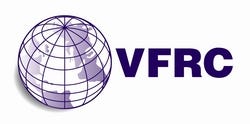Inaugural Meeting of Virtual Fertilizer Research Center Board of Advisors Held in Washington, D.C.
June 30, 2010
 The inaugural meeting of the Board of Advisors of the Virtual Fertilizer Research Center (VFRC) was held at the World Bank in Washington, D.C. The 13-member board represents a broad spectrum of prominent international leaders in the public and private sectors who are experts in the fields of agriculture, fertilizer, food security, sustainable development, soil science, and international philanthropy.
The inaugural meeting of the Board of Advisors of the Virtual Fertilizer Research Center (VFRC) was held at the World Bank in Washington, D.C. The 13-member board represents a broad spectrum of prominent international leaders in the public and private sectors who are experts in the fields of agriculture, fertilizer, food security, sustainable development, soil science, and international philanthropy.
During the meeting the advisors strongly endorsed the Center and its mission to oversee the creation of the next generation of fertilizers and production technologies to help avert world hunger, and pledged their individual and collective efforts to make it successful. The VFRC is a global research initiative organized by IFDC, an international public organization that focuses on increasing and sustaining food security and agricultural productivity in developing countries through the development and transfer of effective and environmentally sound crop nutrient technology and agribusiness expertise. Initial financial support for the VFRC was provided by the United States Agency for International Development; additional funding sources will be sought going forward.
New and improved fertilizers are critical elements in the effort to help feed the world’s growing population, provide sustainable global food security, and protect the environment. Dr. Jimmy Cheek, chancellor of the University of Tennessee (USA) and chairman of the VFRC Board of Advisors, began the meeting by stating, “The need for new and innovative research is a global issue and thus requires a global solution. The VFRC will focus on the development of a new suite of crop nutrients that will revolutionize agriculture in the developing world. Participating individuals and institutions can and will be located literally anywhere on the globe; will be linked in a virtual manner through the Internet and other communications tools.”
IFDC created the VFRC to be the most rapid, economical way to tap the world’s intellectual capacity to generate this critically needed fertilizer research.
The Center will partner with universities, public and private research laboratories, and the global fertilizer and agribusiness industries to bring together the best scientific, business, and government minds to create a research system producing more food with fewer wasted resources and a reduced environmental impact.
According to Dr. Amit H. Roy, IFDC president and CEO, “IFDC created the VFRC to be the most rapid, economical way to tap the world’s intellectual capacity to generate this critically needed fertilizer research.” He added, “The Center will partner with universities, public and private research laboratories and the global fertilizer and agribusiness industries to bring together the best scientific, business, and government minds to create a research system producing more food with fewer wasted resources and a reduced environmental impact.”
With severe population, economic, and environmental issues looming over the next 40 years, the VFRC board is unanimous in its view that the world cannot afford the current level of inefficiency in fertilizer production and use. It is estimated that 40-50 percent of the food consumed worldwide is grown with the aid of nitrogen fertilizers. Yet, only about one-third of the nitrogen fertilizer applied to crops in developing countries is utilized due to inefficiencies in application methods and the inherent properties of current fertilizer products. Poor farmers are burdened, paying for three times as many nutrients as their crops absorb. Moreover, the unused fertilizer often becomes an environmental pollutant, either in the form of greenhouse gas or runoff that fouls streams, lakes and oceans.
The production of one ton of urea, the predominant nitrogen fertilizer product, requires the energy equivalent of four barrels of oil. At the same time, inefficiencies in production and use result in less than 30 percent of the phosphate mined to produce phosphorus fertilizer ever becoming a part of the food chain. Yet, over the past 25 years, no “new” efficient fertilizer product has been developed – particularly no product affordable for use on food crops by farmers in less developed countries.
The world food supply has managed to stay ahead of rising population due to increasing productivity and a modest expansion of cultivated area. However, non-renewable resource reserves (such as phosphates and potash), increasing energy costs and the growing cost to the environment when bringing more land under cultivation pose new challenges. Fertilizer research and development can make a major contribution in addressing these challenges faced by the developing – and developed – nations.
Going forward, global food security will depend on a focused effort to improve soil fertility and increase productivity of food crops, and fertilizer plays a major role. The production and use of current fertilizer products must be improved. Recent advances in nanotechnology and biotechnology open new opportunities for collaborative research between the public and private sectors.
In their two-day meeting, the Board of Advisors agreed that the VFRC’s focus would be: improve efficiency throughout the agricultural value chain, and in a manner that reduces costs for smallholder farmers; ensure that new products and methods are adopted as quickly as possible; consider the value proposition for new products to demonstrate the return on investment to each part of the value chain; seek potential offsets from new, higher efficiency products; concentrate on technologies that make more efficient use of water and are better for the environment; and consider alliances with both upstream and downstream industries in agriculture.
IFDC was founded in 1974 as a center of excellence and expertise in fertilizers to serve the needs of developing countries. It is an outgrowth of the National Fertilizer Development Center (NFDC) of the Tennessee Valley Authority. The majority of fertilizers in use worldwide were developed by the NFDC and/or IFDC. While the NFDC and IFDC employed more than 1500 scientists at one location, the VFRC will coordinate the work of scientists located worldwide. This virtual network will build on the work of the NFDC and IFDC.
You May Also Like


